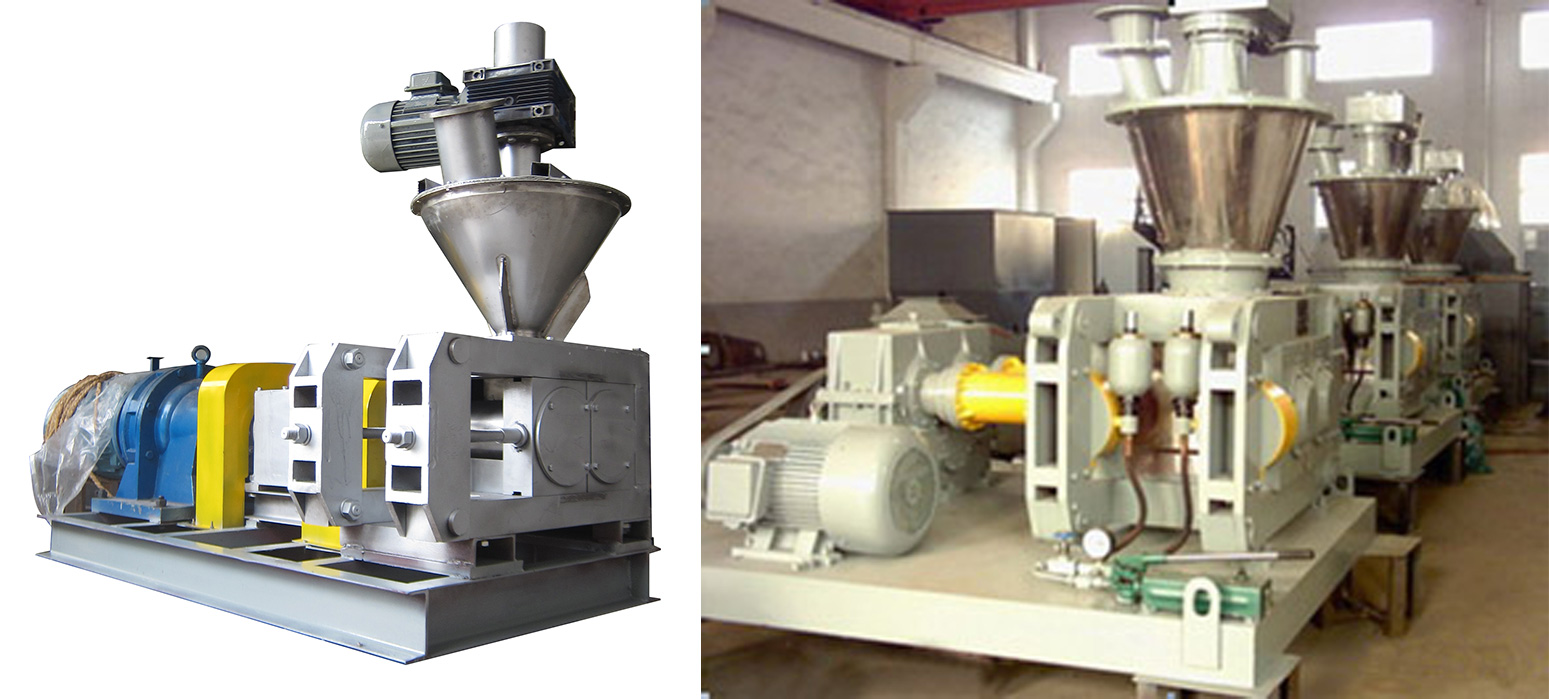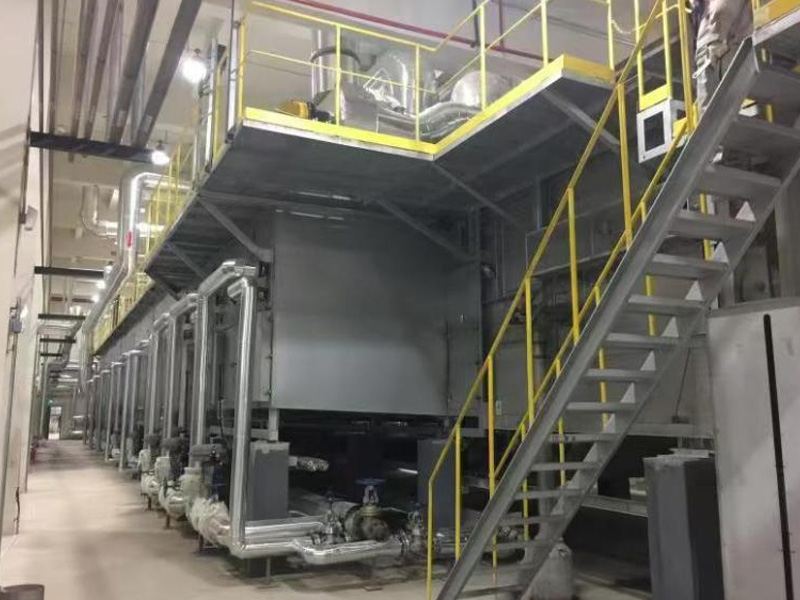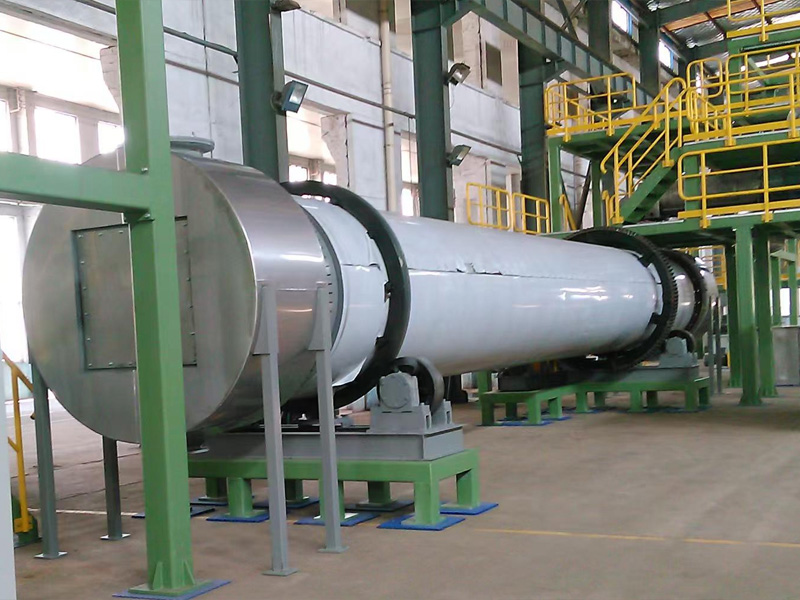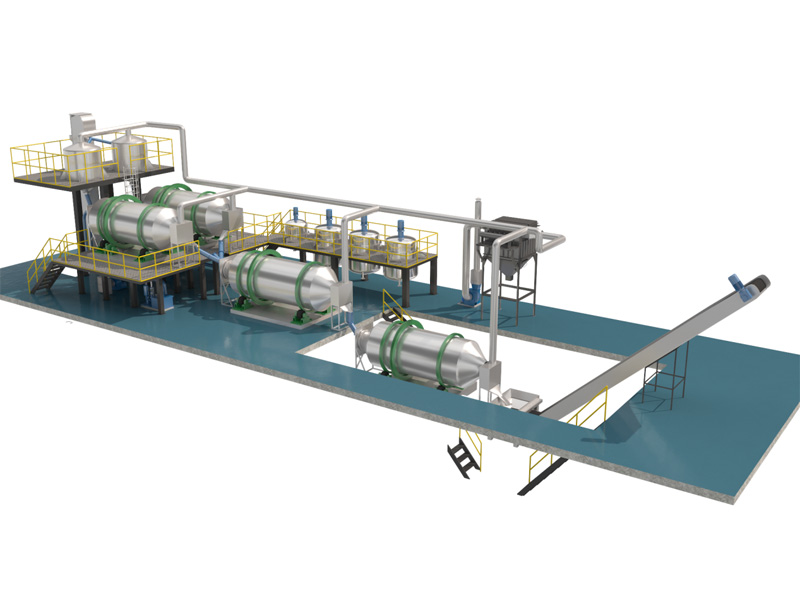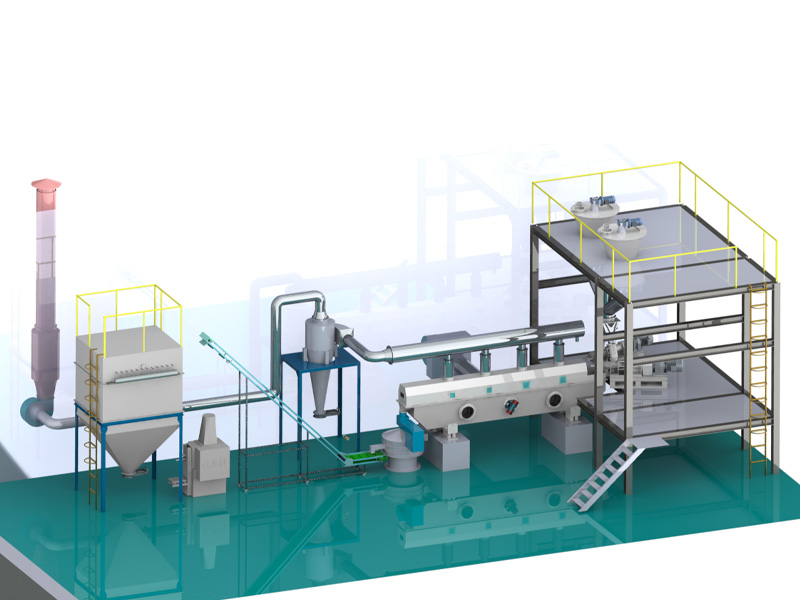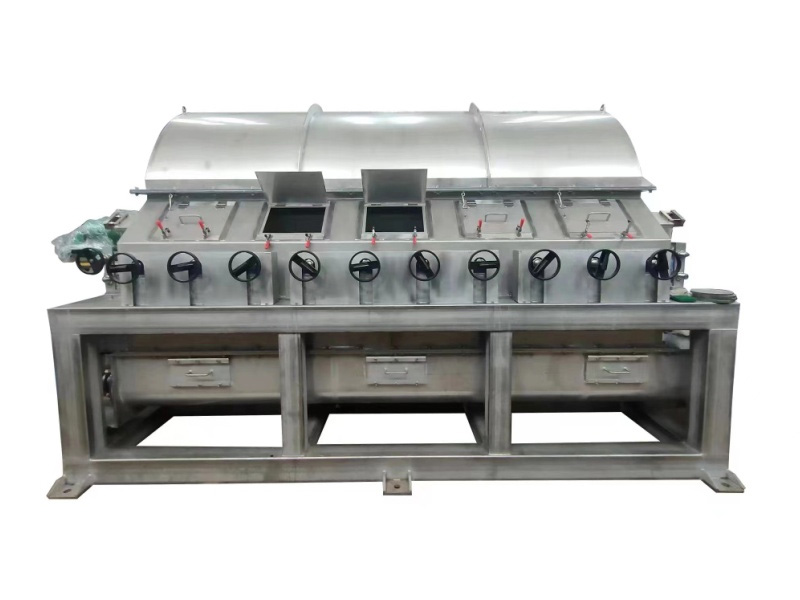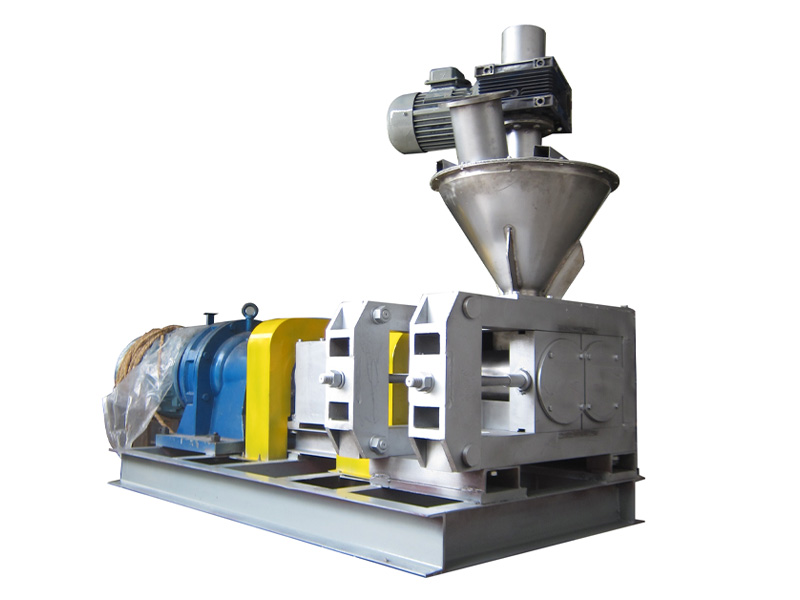I. Working Principle:
The working principle of the SGJ series roller dry granulator is as follows: various dry powder materials are added from the top of the equipment, then go through degassing, and pre-compression by screws before entering the rollers. Under the enormous pressure exerted by the rollers, the material undergoes plastic deformation and is compressed into sheet form. These sheets are then subjected to processes such as crushing, granulating, and screening to obtain granular products. The extrusion pressure can be adjusted according to granulation needs by regulating the hydraulic cylinder pressure.
II. Application Range:
This equipment is widely suitable for producing granules for capsule filling, pigments, detergents, catalysts, strontium carbonate, fertilizers, white carbon black, inorganic salts, trichloroisocyanuric acid, bleaching powder, pesticides, oxides, and industrial dust recycling materials, such as dust from iron foundries, lead, zinc, aluminum dust, converter dust, filter dust, grinding dust, and more.
IV. Technical Advantages:
Material is mechanically compressed into shape without adding any wetting agents, ensuring product purity.
The process flow is simple, energy consumption is low, and production capacity is large.
Direct granulation of dry powder eliminates the need for subsequent drying processes, making it more conducive to integration and modification of existing production processes.
The granule strength is high, and the increase in bulk density is more significant compared to other granulation methods, especially suitable for situations requiring increased product bulk density.
Large operational flexibility and wide adaptability, with extrusion pressure adjustable via hydraulic pressure.
V. Specifications and Models:
|
Specification Model |
Roller Center (mm) |
Transmission Power (kW) |
|
SGJ-240 |
240 |
7.5 |
|
SGJ-360 |
360 |
22-30 |
|
SGJ-400 |
400 |
30-37 |
|
SGJ-450 |
450 |
37-45 |
|
SGJ-600 |
600 |
55-90 |
